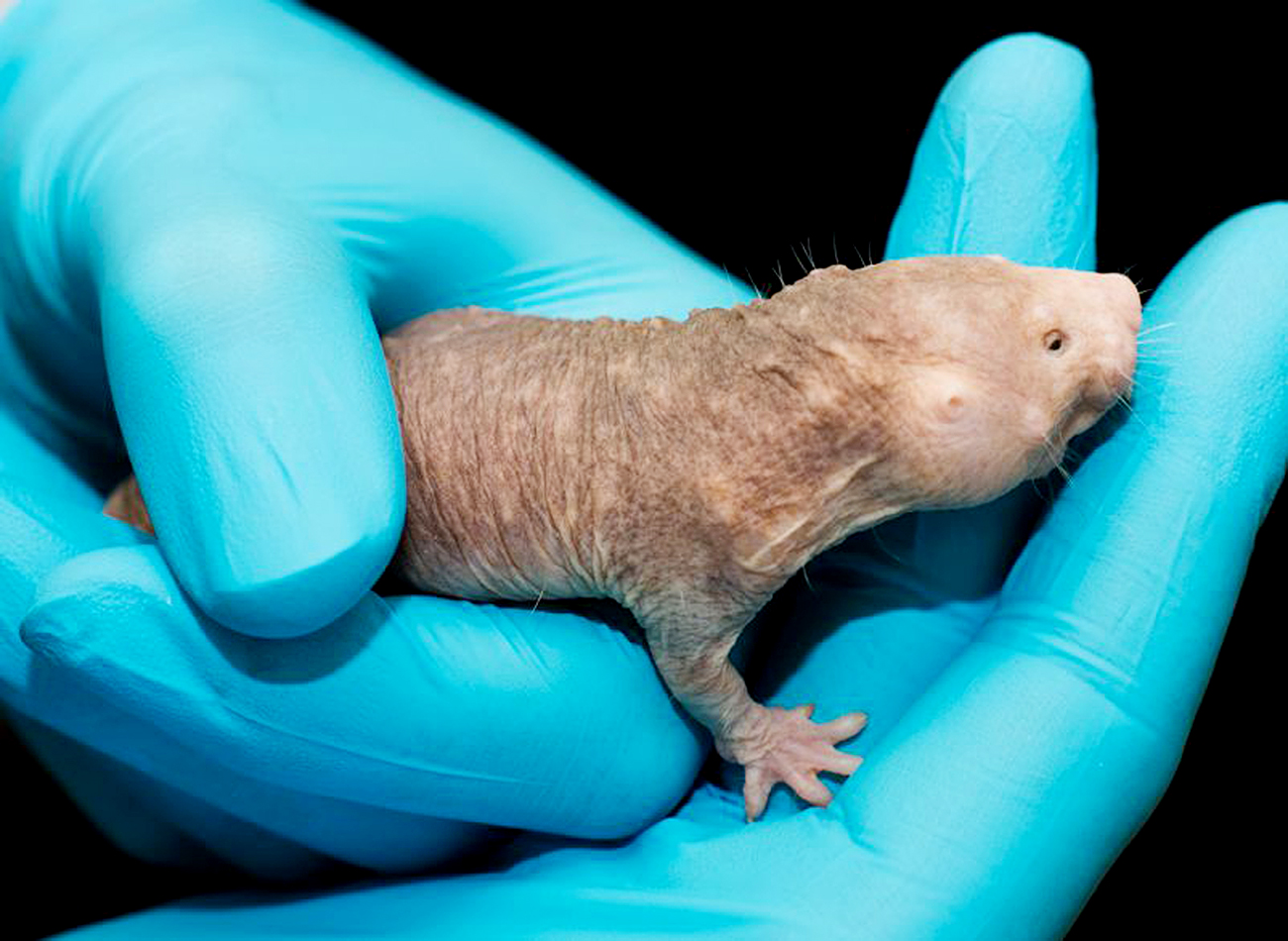Naked mole-rats help Russian scientists understand our possible future

Following a six-month study of naked mole-rats, scientists have surprisingly come up with a forecast for the future of humanity.
AFPNaked mole-rats (Heterocephalus glaber) have very little in common with humans. Found in East Africa - in Kenya, Ethiopia, and Somalia - naked mole-rats appear similar to mice, but they live an incredible 10 times longer, for 30 years or more, which is a stupendous longevity.
Nevertheless, following a six-month study of naked mole-rats, researchers at the Belozersky Institute of Physico-Chemical Biology of the Moscow State University have surprisingly come up with a forecast for the future of humanity.
Naked mole-rats are not prone to age-related illnesses, and remain alert and active throughout their entire life. Why is this so? The Russian scientists found a link between this specie’s slowing body development and the fact that its body has no aging mechanisms. It’s believed that humans will evolve along this same pattern in the future.
Humans and naked mole-rats, together forever
The researchers found that humans and naked mole-rats share a set of similar body development signs, and it’s possible that the two species have been developing along similar paths. Like with naked mole-rats, an important indication of maturity in humans is how long it takes for the brain to develop. For example, brain reactions demonstrated by one-year-old chimpanzees do not become apparent in humans until they turn five.
It took naked mole-rats tens of millions of years to evolve and slow down the aging process. Humans only started along this path between 100,000 and 200,000 years ago, and it will take us several more million years to completely deactivate our aging mechanisms.
It’s impossible to speed up evolution, but scientists are seeking ways to somehow slow down the aging process with the use of pharmaceutical drugs what would isolate free radicals. Moscow State University has been researching such drugs for the past decade, and they’re now undergoing clinical tests on humans.
Key to eternal youth
Researchers noted that naked mole-rats managed to slow down the evolutionary processes and bypass natural selection. Their bodies contain much fewer mobile genetic elements than other mammals. Naked mole-rats have no need for adapting to the changing environment, and so they have virtually stopped evolving.
“Aging is a very costly, painful, and unpleasant way to speed up evolution,” says Maxim Skulachev, senior researcher at Belozersky Institute of Physico-Chemical Biology. “Naked mole-rats are champions and no longer need to speed up evolution. Mother Nature gave them eternal youth by freezing their development at the baby level.”
The scientists identified 43 signs of neoteny, or slowing body development, in naked mole-rats. These include underdeveloped lungs, a huge head, and thermoregulation problems (the temperature inside the lab must be kept at +28°C or above at all times).
The animals have no fur coat and throughout their life they look like newborn baby rats.
Pregnancy in naked mole-rats takes around 90 days, which is rather long. Only the queen and her male partners are reproductively active; the rest of the colony serve and protect them by digging tunnels and raising their offspring, without reproducing themselves. Should the queen die, another female in the clan will assume her role.
Mole-rats owe their ’eternal youth’ to the unusual properties of their mitochondria, which play a decisive role in aging. Mitochondria help living organisms breathe, but they also accumulate toxic free radicals, which trigger the aging processes.
The mitochondria found in naked mole-rats' heart and liver cells are amazingly resistant to free radicals. Concentrations that would kill cells in any other animal have no effect whatsoever on these animals. Just like in newborn mammals, the rate at which oxygen concentration levels decline in naked mole-rats' mitochondria is minimal.
Moscow’s mole-rat colony
The largest lab colony of naked mole-rats, comprising over 2,000 animals, is at the University of Texas. There are about a dozen labs studying this species around the world, and the naked mole-rats at Moscow State University were gifted by the Berlin Zoological Garden. This first such colony in Russia can be watched online.
“The rats have become accustomed to their new environment, and even bred several times,” said Skulachev. “We’re now working to increase the colony size in order to be able to begin serious experiments. There are currently around 60 animals, and by the end of the year, after they have bred some more, we will begin studying their brains.”
Read more: Russian scientist makes anti-aging breakthrough>>>
If using any of Russia Beyond's content, partly or in full, always provide an active hyperlink to the original material.
Subscribe
to our newsletter!
Get the week's best stories straight to your inbox
